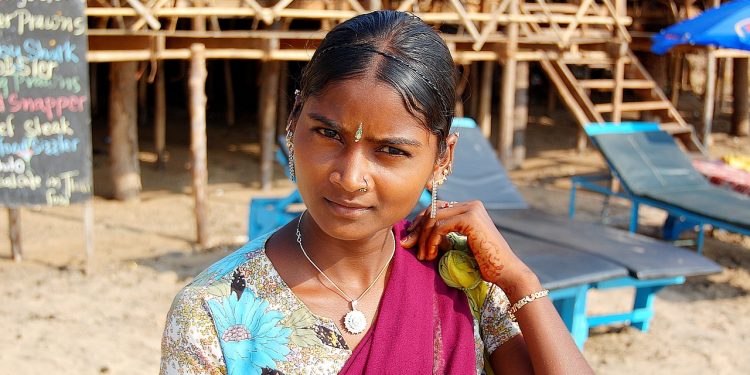No Country for Women: Woman Murdered by Stalker

A Foul Murder
In November, a 21-year old techie was killed by her former classmate-turned-stalker at her residence in the Chennai neighbourhood. The victim, S. Indhuja, was set ablaze by Akash, after she had reportedly spurned his marriage proposal. According to eyewitness accounts, the perpetrator waited until the flames engulfed the victim and then left the scene. The victim’s mother and sister suffered severe burns while attempting to save the victim.
When The Woman Said “No”
The incident sent shock waves among the public, particularly the women folk who are yet to overcome the gruesome murder of Swathi, a young techie who was hacked to death by a stalker in full public view at Nungambakkam railway station in June 2016. In August, K Sonali, a 22-year old engineering student in Manamadurai was savagely attacked with a wooden log by a male senior student. The next day, N. Francina, a 24-year old school teacher died after she was attacked with an aruval (type of billhook) inside St. Peter’s church in Thoothukudi. Incidentally, in all the above cases, the victims had spurned the marriage proposals or advances by the assailants.
Crime Against Women
The increasing incidents of violence against women not only raises serious concerns about the safety of women, but also casts aspersions on the provisions of Article 21 of the Constitution which guarantees protection of life and personal liberty to all individuals.
According to the recently released National Crime Records Bureau (NCRB) data for 2016, the national tally of crimes against women increased by 2.9% from 3.29 lakh cases in 2015 to 3.38 lakh cases in 2016. The segment includes cruelty by husband or his relatives, rape, kidnapping, abduction and assault on women with intent to outrage her modesty.
In the states list, Uttar Pradesh holds the dubious record for maximum number of crime against women at 14.5% followed by West Bengal at 9.6%. The Union territory of Delhi recorded the highest crime rate of 160.4 crimes per one lakh population against the national average of 55.2. Maharashtra witnessed 2.8% increase in incidents of stalking during 2016.
Unsustainable Urbanisation
The metropolitan cities are not far behind in crime against women. Delhi tops the list in number of crimes against women at 33% followed by Mumbai at 12.3%. Delhi recorded crime rate of 8.8% under stalking followed by three Maharashtrian cities Nagpur (4.5%), Mumbai(4.25%) and Pune(6.4%).
Although Chennai retains the tag of safest cities for women with a ranking of 18 out of the top 19 cities, the recurring incidents of women being stabbed in public or set ablaze within their safe confines have triggered an alarm for the State administration to wake up.
Just a day after Indhuja’s gruesome murder incident, a 23-year Mithun Srinivasan, son of a TV actress was arrested after he had allegedly threatened his former classmate with dire consequence if she refuses to marry him. The victim who was unable to bear the harassment lodged a police complaint, and Mithun was arrested under Tamil Nadu (Prohibition of Harassment of Women Act) among other sections of IPC.
What The Numbers Don’t Say
The NCRB rankings are based on the number of crime incidents and crimes reported. However, in reality most of the incidents of harassment against women go largely unreported. Fearing physical assault or damage to family’s reputation, most women prefer not to report incidents of stalking and harassment until it becomes inevitable. But the recent events prove that reporting of such incidents have only turned out to be fatal as it was dreaded to be.
One factor that clearly emerges from all the above incidents is that the victims in all cases are performing reasonably well in socio-economic parameters and the assailants in all cases are either a former schoolmate or residing in neighbourhood. In all the cases, they have tried to impose their feeling on the women and when failed resorted to extreme measures.
With the economic liberalisation, more number of women started participating in the workforce which to an extent marginalised men who were hitherto considered themselves to be inevitable. The fear of losing supremacy on one side and the increasing socio-economic emergence of women on the other side has increased the feeling of insecurity among men who resort to violent behaviour in desperation.
The recurring incidents of stalking and intimidation highlights that the culprits are neither deterred by the legislation nor the fear of the enforcement agencies. They continue to strike with great impunity. There are adequate legislations to protect the safety of women, but the need of the hour is stricter law enforcement which should serve as deterrent to erring individuals. The anonymity of complainant should be protected in the interest of their future. Also, society unlike it did in most of the above cases, should not persecute or malign the victims in such cases. Instead, it should take a moral approach to embrace the victims with care and safeguard their interest and security.



